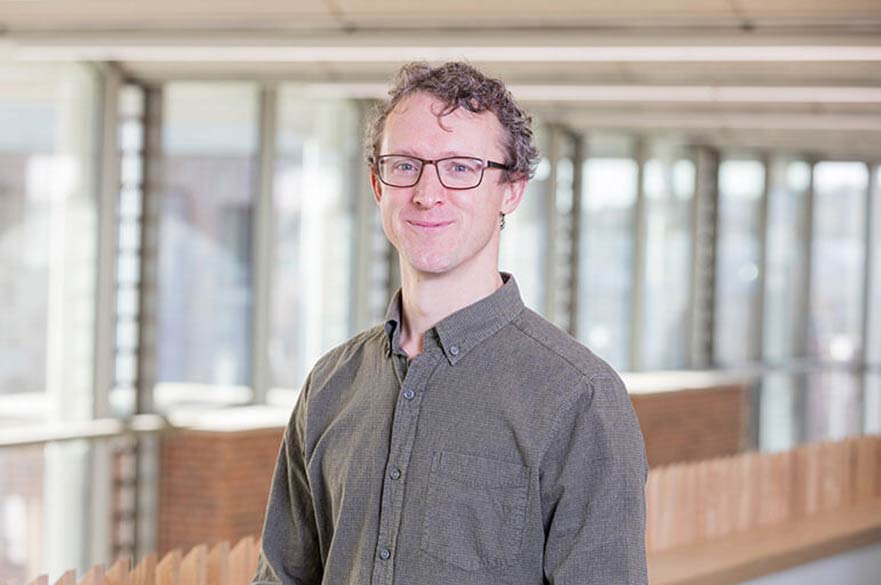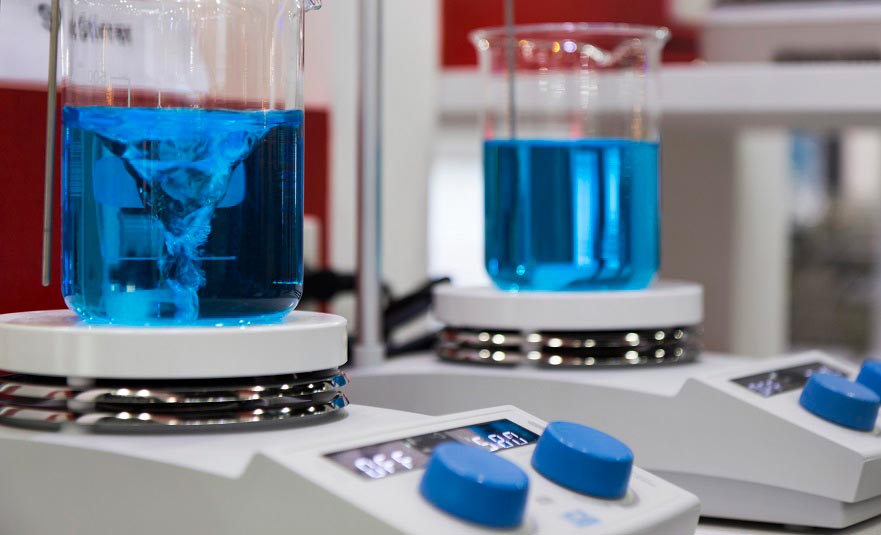Role
Dr David Fairhurst is the Post Graduate Development Manager and oversees the Mathematics and Physics portfolio of courses:
He is Module Leader for:
- General Relativity (PHYS32181)
- Advanced Experimental Techniques (PHYS32222)
- 21st Century Scientist (PHYS42311)
- MSc Research Project (PHYS46622)
He also contributes to the module Ideas of Motion and to Personal Tutorials and Research Project supervision.
He was awarded the Vice-Chancellor's Teaching Award in 2014.
Career overview
Dr Fairhurst was previously a Post-doctoral Researcher at The University of Edinburgh and Victoria University, Wellington, New Zealand. He was awarded his PhD in Physics (on Polydispersity in Colloidal Phase Transitions) from The University of Edinburgh and his BSc in Physics from Imperial College, London and ESPCI, Paris.
He has also worked for the educational software company Crocodile Clips (now Sumdog) writing a range of online science educational materials.
Research areas
David Fairhurst is interested in complex fluids, droplets, flow, evaporation, phase changes and the interaction of liquids with solids.
Research Opportunities. I am offering three self-funded postgraduate research projects:
Multiple interacting droplets. The evaporation of an individual droplet is very well studied, but in nature and industry, there are always thousands of them. Under some situations multiple droplets evaporate more quickly than isolated droplets. In regular arrays, alternate droplets can evaporate leaving a larger array. This experimental project will investigate such interactions and effects, in collaboration with the Universities of Durham and Edinburgh. This project has been taken!- Patterns in evaporating blood droplets. This combined experimental/computational project will continue ground-breaking work using the patterns in dried blood droplets to monitor health and screen for diseases. Our current work (publication under review) shows that machine learning can be used to discriminate between blood droplet patterns from resting and exhausted volunteers. Proof-of-principle work also shows that this approach can be used to identify blood that is infected with malaria. In this project you will work with collaborators in hospitals and clinics in UK and Ghana to continue the work on malaria, and investigate the viability of this approach for diagnosing other conditions, such as diabetes.
- Flow in soft channels. This experimental project will investigate the interplay between fluids moving within deformable channels. As the liquid progresses, it may pull the channel walls together, or push them further apart. In a network, liquids in adjacent channels will influence each other, and can lead to bunching (as seen when hair becomes wet). The project will require cover a range of experimental techniques from microfabrication to image processing.
Please contact David Fairhurst directly to discuss these and other projects. Further information may be obtained from the NTU Graduate School.
David has successfully supervised several previous PhD students:
- David Willmer, Non-equilibrium polymeric complex fluids
- Kyle Baldwin, Novel pillar formation in evaporating poly(ethylene oxide) droplets
- Amgad Alrwaili, Measuring liquid pressure using bubbles as MRI contrast agents
- Edwin Abdurakman, Development and evaluation of ingestible microbubble-based contrast agents for meal pressure MRI within the human stomach
- Yohanna Msambwa, Experimental investigations of drying droplets containing microparticles and mixtures of Poly(ethylene oxide) microparticles
- Joe Brennan, Reduced drag over structured super-hydrophobic surfaces
- Emmanouil Papastavrou, Low temperature deposition modelling of hierarchical composite structures for applications in hard tissue engineering
His current research activity includes:
- Supervision of PhD student Thomas Darwent: Flows in responsive porous media
- Supervision of PhD student Tengku Farizan Izzi Che Ku Jusoh (Izzi): The influence of process parameters on development of hollow particles (in collaboration with The University of Nottingham)
- Award of a Knowledge Transfer Partnership in collaboration with Cole-Parmer
Research interests include:
Evaporation of liquid droplets – Although a seemingly trivial problem there are many competing physical process taking place when a droplet of liquid is left to dry on a solid surface: evaporation and phase change, heat flow, convection currents, molecular diffusion, phase change, capillary flow, Marangoni flow to name a few. Understanding the evaporation process has implications for technologies including crop spraying, ink-jet printing and heat flow applications. His important contributions to this field include:
- The importance of gravity in determining the direction of flow within small droplets (published in Physical Review Letters with news articles in Physics and FYFD)
- A simple method for characterising the deposits formed in evaporating droplets (in European Physical Journal E)
- The formation of tall polymer pillars in evaporating droplets of poly(ethylene oxide)
- A general model for contact line motion in evaporating droplets (in Soft Matter)
Complex fluids – Most everyday liquids contain a range of components, which can interact in complex ways. Many foods and drinks contain micron-sized colloidal particles; detergents and cleaning products contain surfactant molecules which have one water-loving end and the other oil-loving end; long chain polymer molecules are added to many products to give particular material and flow properties. The team's research in this broad field ranges from the phase behaviour of hard sphere colloidal suspensions, in particular the effect of polydispersity; the non-equilibrium behaviour and rheology of surfactant solutions; foam stability using novel molecules. Important contributions to this field include:
- Levtiation in viscous liquids using magnetic stirrers (published in Physical Review Letters with mews articles in Physics, Nature, Inside Science, FYFD and the Gallery of Fluid Motion)
- A universal law describing how different -sized particles fractionate when a suspension separates into two phases (in Physical Review Letters with public summary in Nature)
- Understanding the dynamics of phase separation based on the underlying free-energy landscapes (in Physical Review Letters)
External activity
David Fairhurst is:
- Committee member of East Midlands Branch of the Institute of Physics
- A member of the Institute of Physics
- Co-founder and Scientific Committee member of the International Series of Droplets Conferences
Sponsors and collaborators
Current and recent research is being conducted with the collaboration, funding and / or support of:
- The Engineering and Physical Sciences Research Council (EPSRC)
- The Nuffield Foundation
- The Royal Society
- Unilever Research
- Angus Fire
- GEA Pharma
- Cole-Parmer
University collaborations include the Experimental Soft Matter Group in Heinrich-Heine University, Düsseldorf, Prof Mike Evans at the University of Leeds, Dr Prashant Valluri at the University of Edinburgh, Dr Richard Hill at the University of Nottingham and the Soft Interfaces Group in Orsay, Paris.
Recent research funding has included:
- The next generation magnetic stirrer, Technology Strategy Board, £82,049
- Drying processes in thin films, Merck Chemicals, £5,920
- Improved tablet coatings for continuous processing, Technology Strategy Board, £42,750
- Novel molecules to stabilise foams, £69,000
- Proteins and other naturally occurring substances as next generation foams, £85,000
- Properties of colloids with simple and complex fluids, NTU Vice-Chancellors Bursary, £63,060
- Dynamics and patterns in soap films, The Nuffield Foundation Science Bursary, £1,360
- Microrheology of non-equilibrium polymer solutions, Central Laser Facility, £27,000
- Force measurements in complex fluids, EPSRC Collaborative Award in Science and Engineering (CASE) for New Academics (CNA), £85,000
- Microscopic manipulations and force measurements in non-equilibrium complex fluids using optical tweezers, The Nuffield Foundation, £5,000
- Microscopic study of non-equilibrium complex fluids, The Royal Society, £15,000
Publications
Density-driven flows in evaporating binary liquid droplets. Edwards AMJ, Atkinson PS, Cheung CD, Liang H, Fairhurst DJ and Ouali FF, Physical Review Letters, 2018, 121 (18): 184501
Magnetic levitation stabilized by streaming fluid flows. Baldwin KA, de Fouchier J-B, Atkinson PS, Hill RJA, Swift MR and Fairhurst DJ, Physical Review Letters, 2018, 121 (6): 064502
Controlling and characterising the deposits from polymer droplets containing microparticles and salt. Msambwa Y, Shackleford ASD, Ouali FF and Fairhurst DJ, The European Physical Journal E, 2016, 39 (2), p. 21
Classifying dynamic contact line modes in drying drops. Baldwin KA and Fairhurst DJ, Soft Matter, 2015, 11 (8), pp. 1628-1633.
Effect of vessel wettability on the foamability of "ideal" surfactants and "real-world" beer heads. Hamlett CAE, Wallis JD, Pugh RJ and Fairhurst DJ, Journal of the American Society of Brewing Chemists, 2015, 73 (3), pp. 280-286.
Monolith formation and ring-stain suppression in low-pressure evaporation of poly(ethylene oxide) droplets. Baldwin KA, Roest S, Fairhurst DJ, Sefiane K and Shanahan M, Journal of Fluid Mechanics, 2012, 695, 321-329
Drying and deposition of poly(ethylene oxide) droplets determined by Péclet number. Baldwin KA, Granjard M, Willmer D, Sefiane K and Fairhurst DJ, Soft Matter, 2011, 7, 7819-7826
Three-dimensional structure and growth of myelins. Reissig L, Fairhurst DJ, Leng J, Cates ME, Mount AR and Egelhaaf SU, Langmuir, 2010, 26 (19), 15192-15199
Swelling and shrinking kinetics of a lamellar gel phase. Fairhurst DJ, Baker ME, Shaw N and Egelhaaf SU, Applied Physics Letters, 2008, 92 (17), 174105-1-174105-3
Colloid-polymer mixtures at triple coexistence: kinetic maps from free-energy landscapes. Poon WCK, Renth F, Evans RML, Fairhurst DJ, Cates ME and Pusey PN, Physical Review Letters, 1999, 83 (6), 1239-1242
Universal law of fractionation for slightly polydisperse systems. Evans RML, Fairhurst DJ and Poon WCK, Physical Review Letters, 1998, 81 (6), 1326-1329.
Press expertise
- Fluids and liquids
- The behaviour of droplets on surfaces
- Evaporation of liquid droplets
- 'Kitchen' physics
- Weather physics - including the science of rainbows
- Complex fluids: polymers, surfactants (including foams and bubbles), colloidal suspensions
- Rheology (the flow of liquids)



